From Rivets To Rifles: America’s War Posters
June 16th, 2020
7 minute read
The statistics are shocking. When World War II began on September 1, 1939, the United States military was incredibly small. The raw numbers presented in some reports put America at 18th on the list of international military powers, just behind Romania. Even with a tighter comparative view that takes more factors into account, America’s military still falls at the tail end of the top 10, and well behind the nations that would become our opponents: Germany, Italy and Japan.
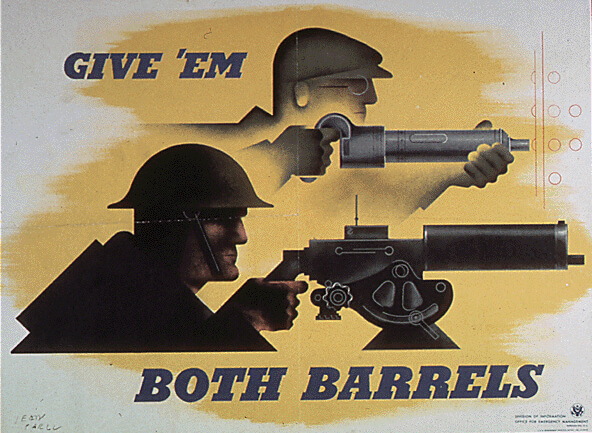
In 1939, America was still struggling to overcome the Great Depression, with unemployment still high and plenty of despair to go around. Most Americans were not interested in paying for a large standing army, and instead relied on the Atlantic and Pacific oceans to dissuade any potential invaders. Those great natural barriers had kept America safe from foreign invasion since 1814.
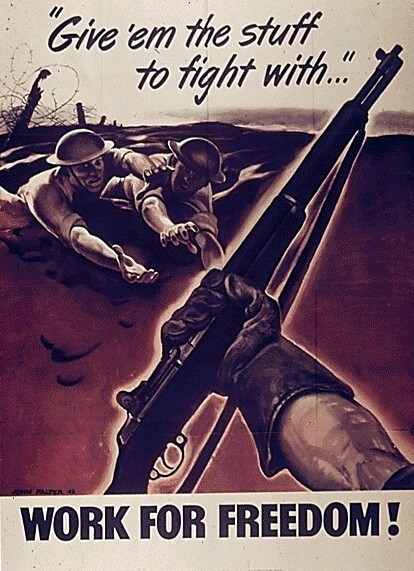
U.S. participation in World War I came late in the conflict (April 1917), and after victory in the “war to end all wars,” most Americans were convinced that European problems were best left to the Europeans to resolve. As Germany invaded Poland to kick off hostilities once again, the majority of American voters wanted Uncle Sam to remain neutral.
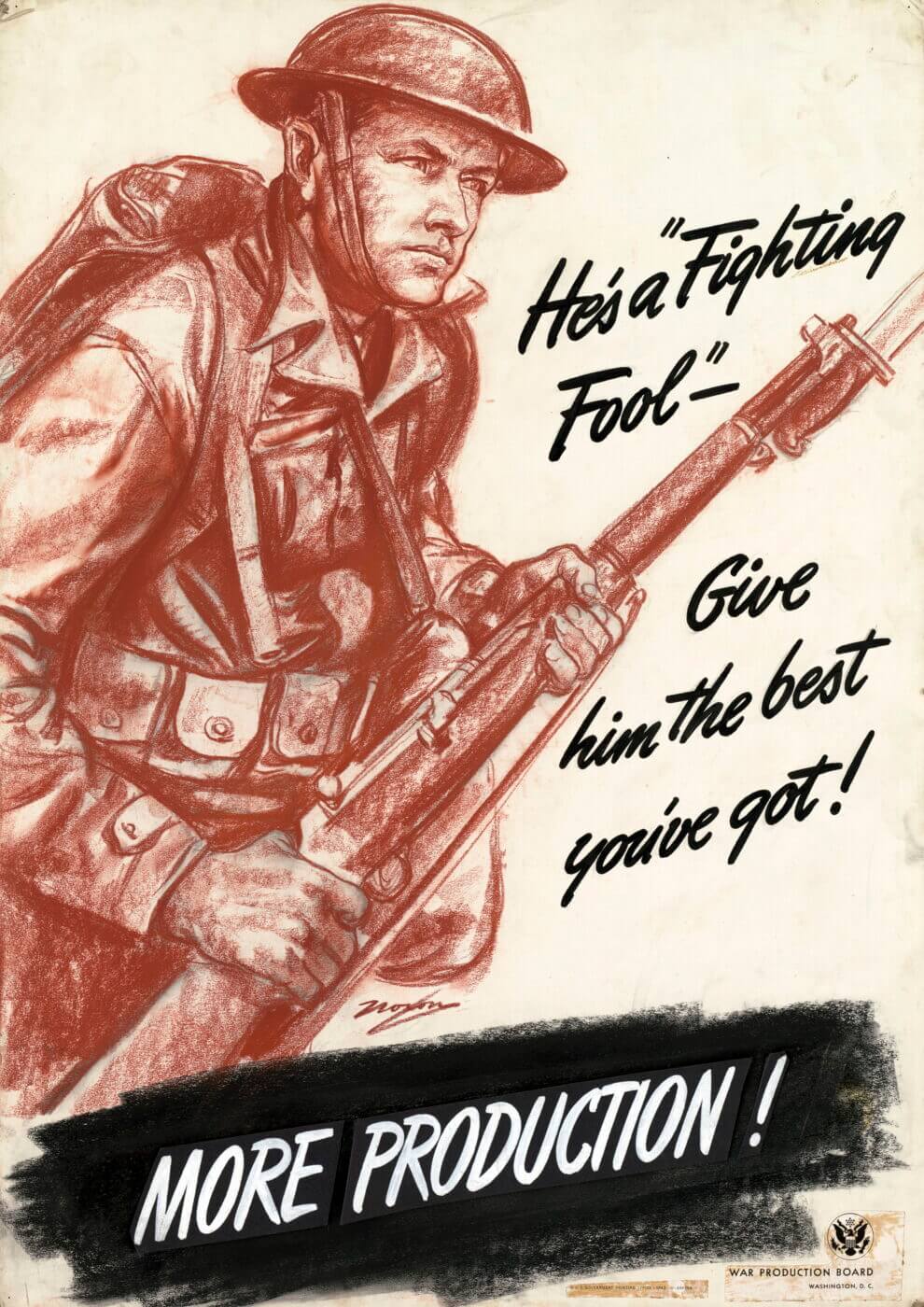
As the U.S. military was pathetically small as World War II began, Axis war planners became fixated on the “current state” in America and made no allowances for the massive potential of American industry and manpower. In Germany and Japan alike, America was considered to be soft and distracted, and unwilling to fight.
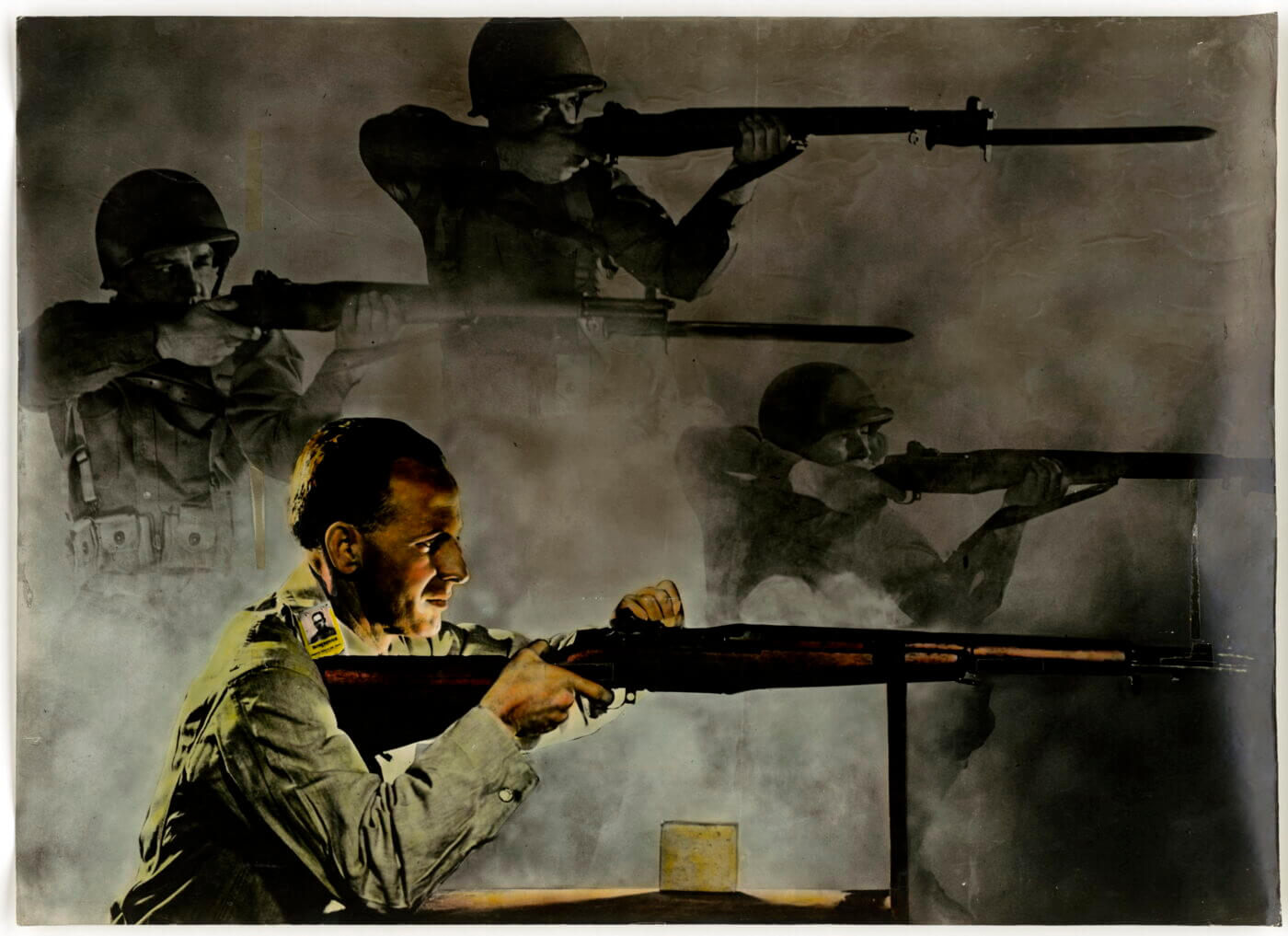
The Arsenal of Democracy
President Roosevelt first vocalized the concept of the Arsenal of Democracy during a radio address to the nation on December 29, 1940. Roosevelt committed American industrial muscle to support England and the European allies in their fight against Hitler’s Germany. Roosevelt included Nationalist China is his call to “arm and support” the Allies in their fight against fascism and imperial aggression.
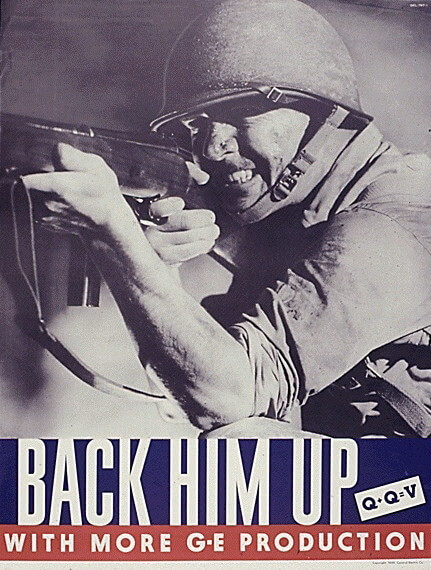
By the end of 1940, the situation was precarious — England stood alone against Germany in the West, while holding off Italian aggression in North Africa. America was dangerously complacent in its isolation and neutrality, and Roosevelt warned that new technologies made the world a smaller and more dangerous place.
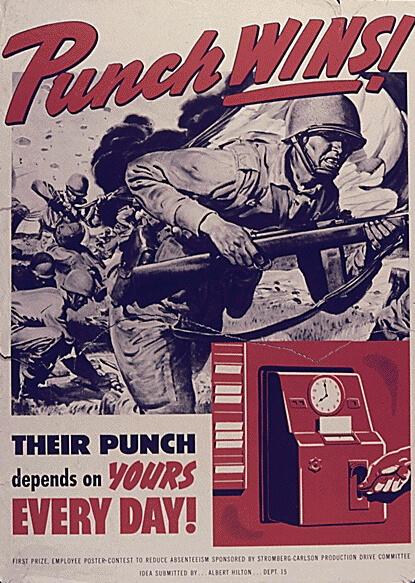
In the intervening months between Roosevelt’s announcement of the Arsenal of Democracy and the attack on Pearl Harbor, American military strength grew only slightly. U.S. production of war materials remained at a trickle. The new M1 Garand rifle was produced at an ever-increasing rate (to learn more about the M1 Garand and the man behind it, click here). The original versions of the Thompson submachine gun were sold to England, but at more than $200 apiece, the cash-strapped British could barely afford them (to learn more about the submachine guns of World War II, click here).
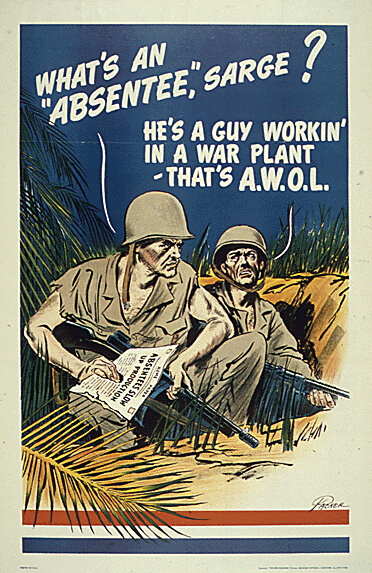
The Japanese attack on Pearl Harbor changed everything. U.S. military production accelerated beyond anything ever seen before. U.S. unemployment hovered around 14.6% in 1940, and by 1945 it had fallen to 1.9%. America’s military employed 20% of the population during the war, and the mobilized juggernaut of American industry employed most of the rest. America not only outfought its enemies, it outworked them too. And to support this, a whole host of fascinating wartime posters began to appear to support the cause.
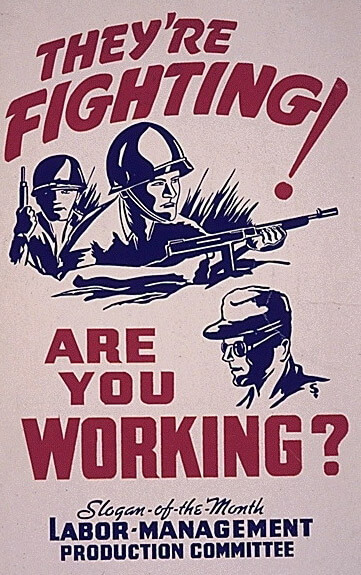
Worker as Warrior
Wartime motivational posters focused heavily on an effective theme — placing the worker on the same level as the soldier. The “teamwork wins” concept directly connected with America’s competitive spirit and American workers pushed themselves to meet larger and larger quotas — for example, America produced more aircraft in 1944 alone than Japan did in all the war years combined.
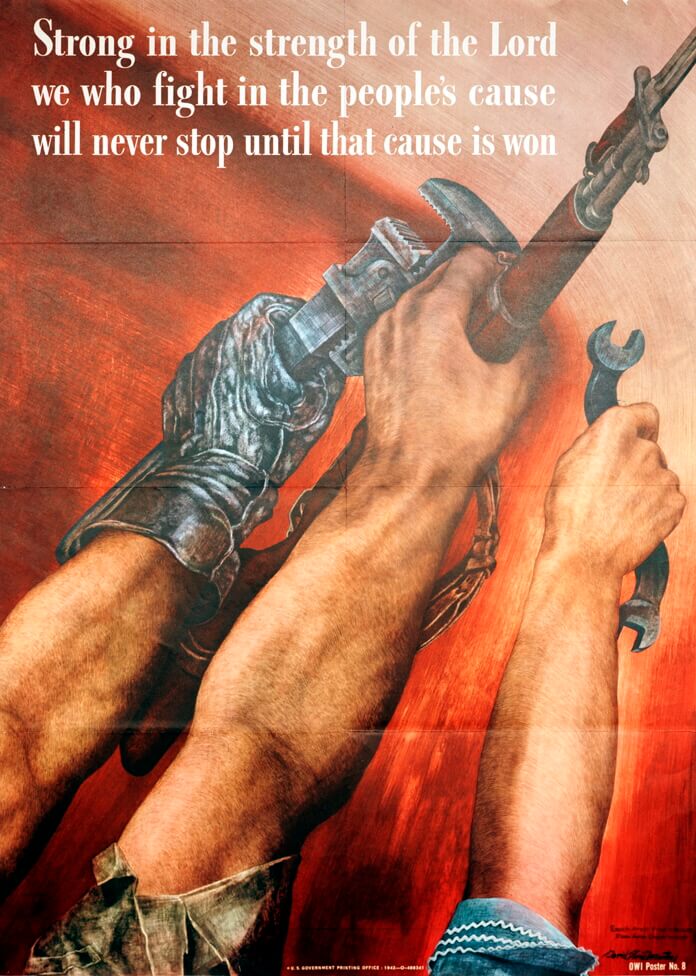
Posters also promoted the importance of quality, attention to detail, health and safety, and minimal absenteeism. American workers produced more and better weapons, along with the spare parts to support them, than Axis factories could hope to match. In a 2010 conversation with USAAF Captain Don Strait (a 13.5 victory ace of the 356th Fighter Group), he described how he flew home from a strafing attack against a Luftwaffe airfield in France with his P-47 Thunderbolt running “a little rough,” only to discover that his fighter had been riddled with ground fire, including two 20mm AA hits to the engine.
“We never once worried about the quality of the design or manufacture of our aircraft. Our mechanics could fix anything, and our fuel and ordnance was of the highest quality.” America’s soldiers, sailors, airmen and Marines fought with confidence because they believed in the weapons they were issued.
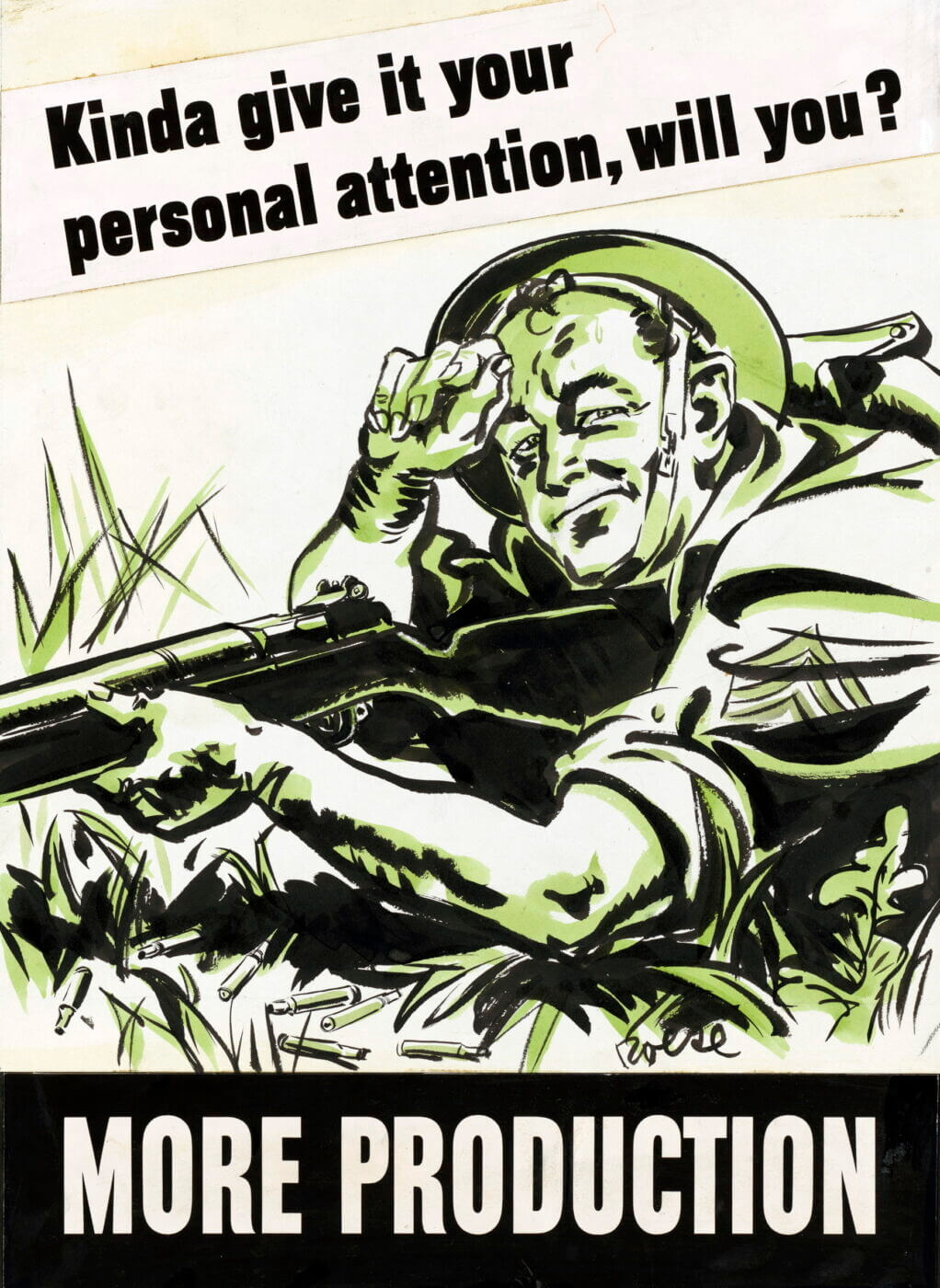
America’s Secret Weapon
My father was a combat infantryman in the ETO from June 1944 until the end of the war. During the fifty-year anniversary of the end of World War II, I interviewed him about his time in the Hurtgen Forest and then the Battle of the Bulge. Those were hard times, but he answered me without pulling any punches:
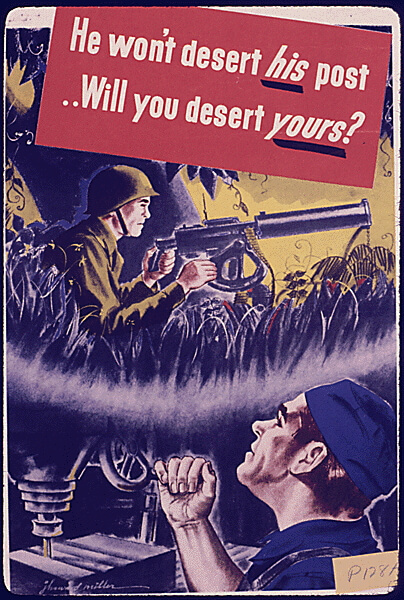
“By that time we were getting pretty tired and looked pretty ratty. Many of our supplies were low and we were cold, wet, hungry and miserable — but we were still in the fight. If you think our GIs were bad off, plenty of the Germans we captured were downright pathetic. Many of them were in rags, and some didn’t even have proper shoes. And at that point they carried almost anything that would shoot.”
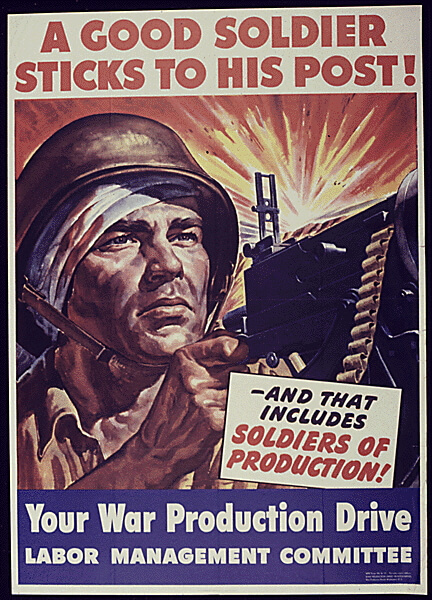
I asked him if the German troops that were so badly equipped were “Volksturm” (People’s Army) units, and he said that even many of the Wehrmacht regular-army troops were in very poor shape. Clearly, the power of American industry and supply, even in a grinding war of attrition, was paving the way to victory. My dad knew that the war effort at home made a difference in the field. He once described America’s women as our “secret weapon” during World War II.
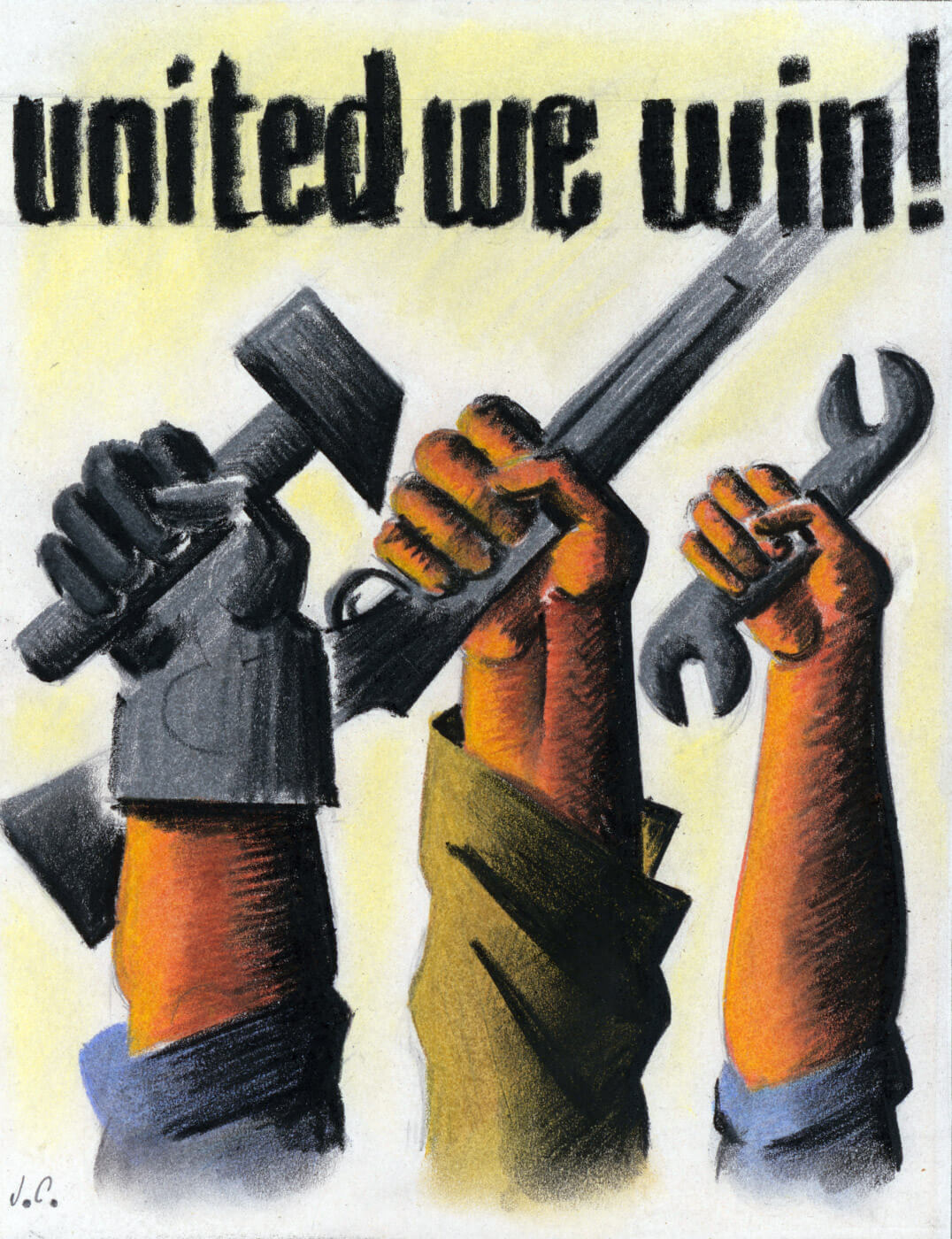
“The women made the difference. They picked up the slack. With so many men in the service, the ladies had to take over everything else, and they did it well. Your grandmother, your mom and her sister, they all did their part.” My grandmother volunteered with several organizations supporting the war effort, while my mom and my aunt went to work making gun turrets for B-24 Liberator bombers. “Hitler never figured on them,” Dad said.
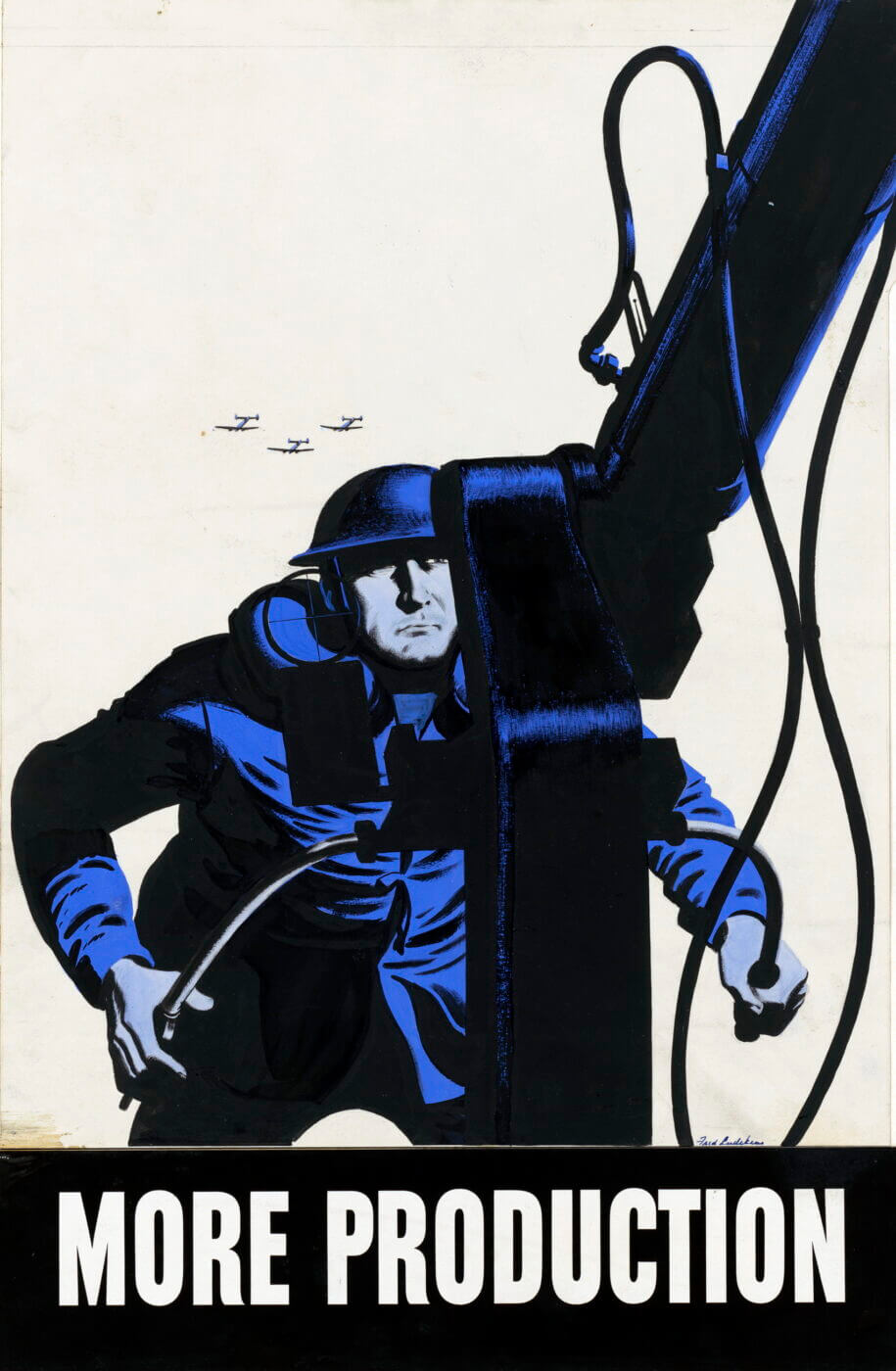
The Axis war planners never accounted for America’s hidden labor force, an army of highly capable women workers. My mother hated violence and she wasn’t a fan of guns either. But she lost her older brother in the war against the Nazis, so when she went to do war-work she was fighting back as best she could. In the end, it was a massive team victory for America and the Arsenal of Democracy.
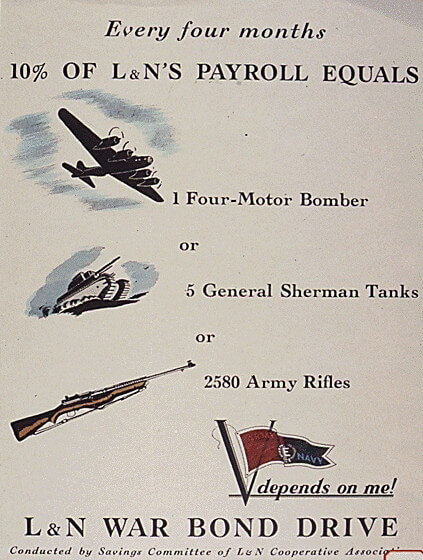
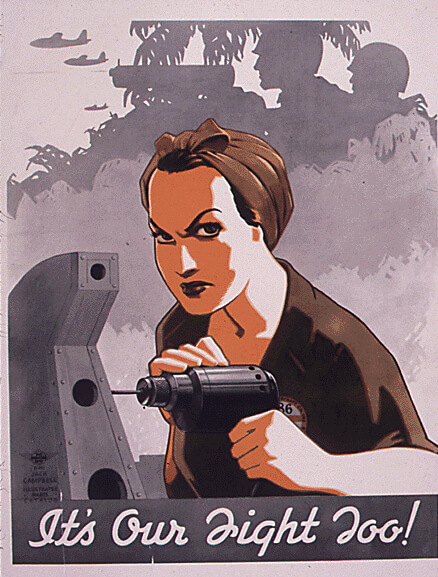
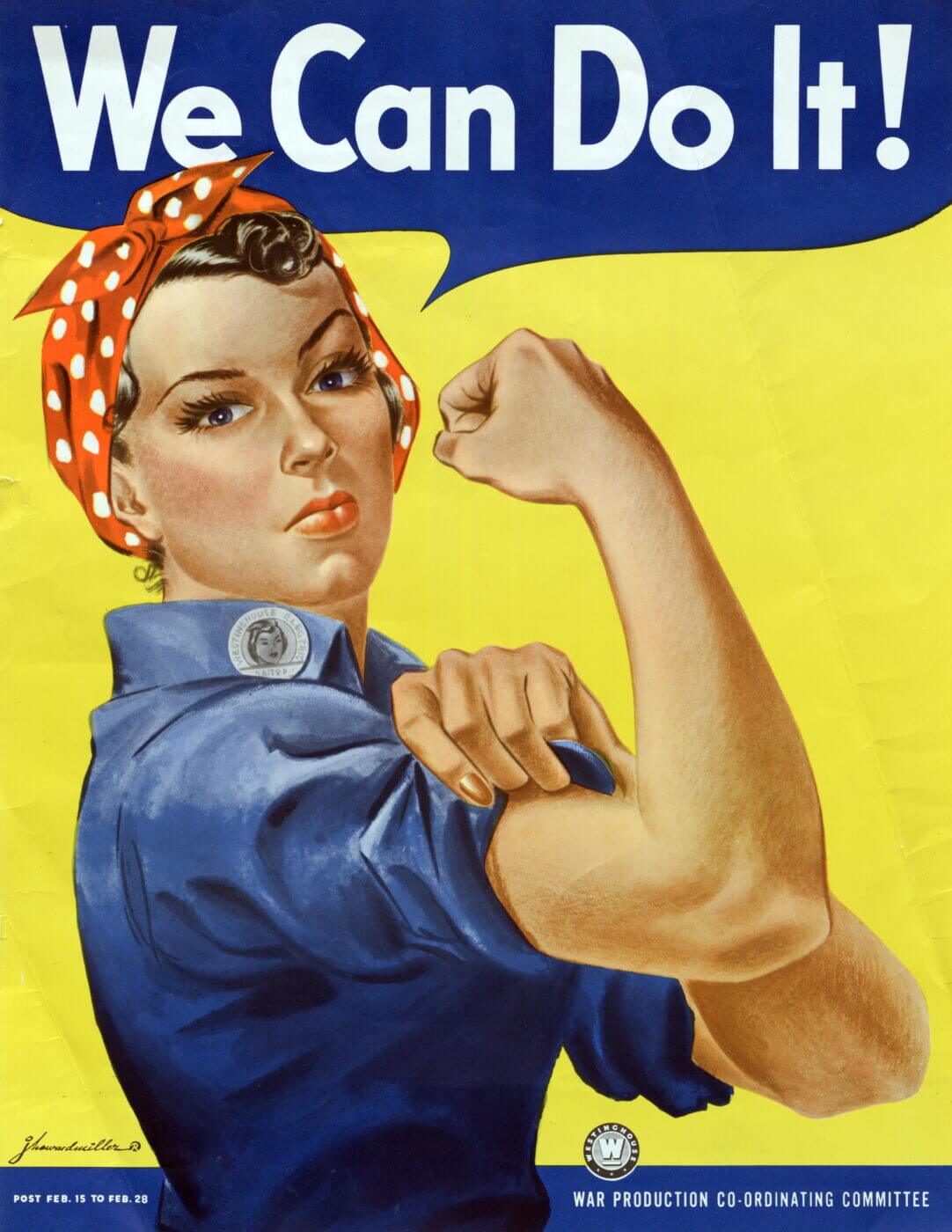
Weapons of the Workers
In the propaganda war for the commitment of the American worker, wrenches, screwdrivers and rivet guns appeared alongside, and carried equal weight as the M1 Garand, the Thompson SMG and the Browning M1917 machine gun. Rivets and screws equaled bullets and bombs. And production teams fought to meet their quotas with the fervency of a desperate last stand.
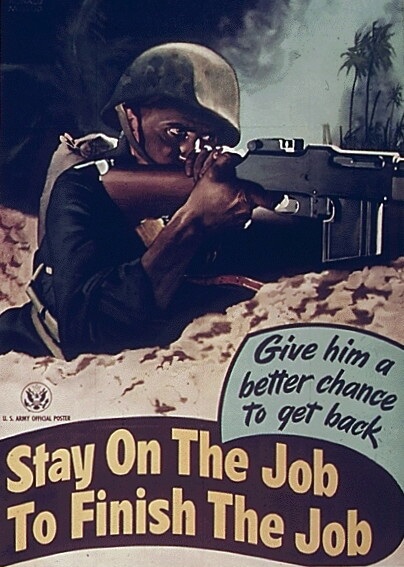
Industrial production posters featured all the major American small arms, and some that firearms enthusiasts might not expect. The relatively rare Reising Model 50 SMG and the Johnson M1941 rifle made an occasional appearance, along with the big .50 caliber Browning M2 in its water-cooled anti-aircraft configuration.
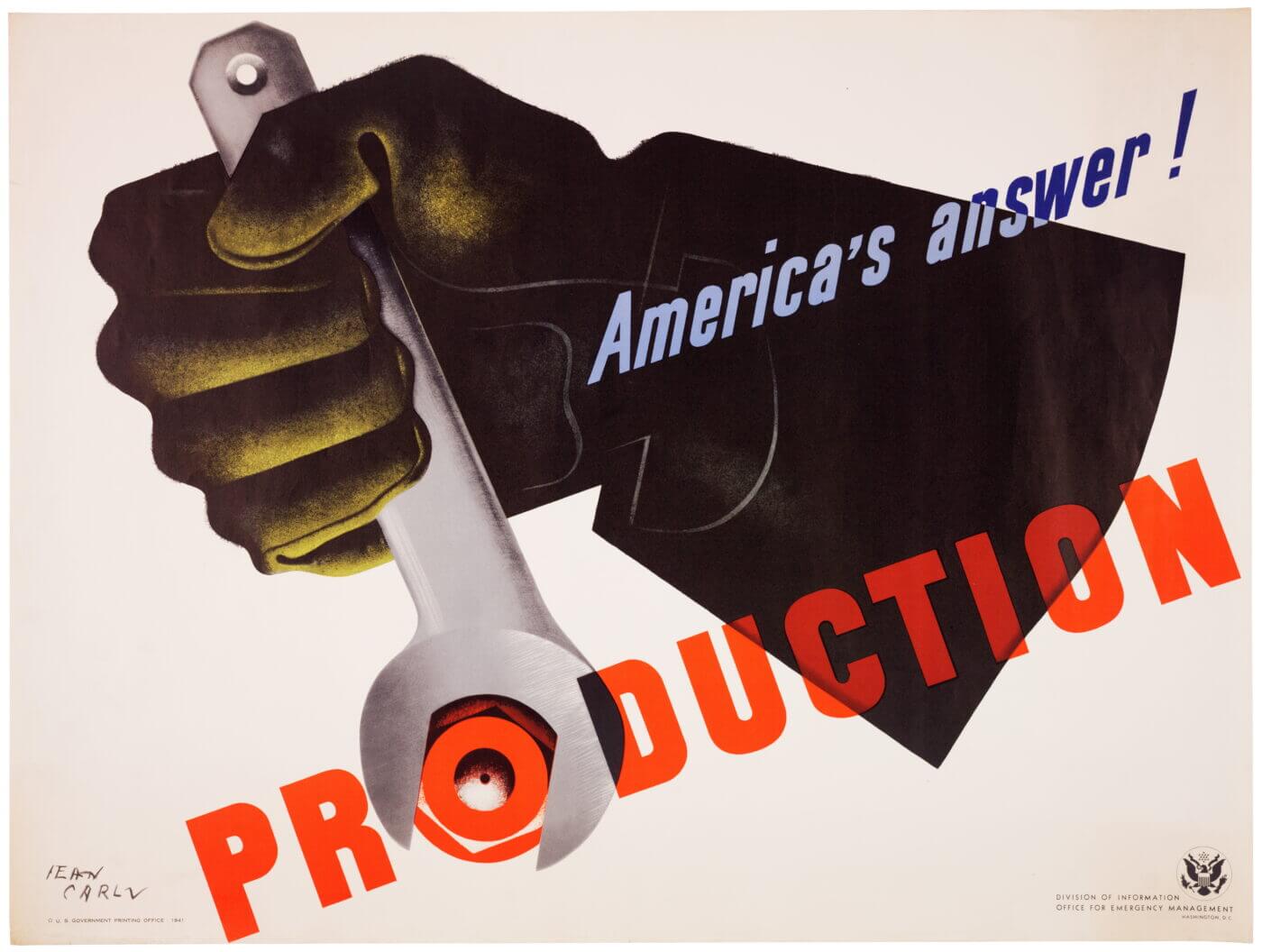
Regardless of the weapon they showed, U.S. wartime production posters instilled workers with pride, and motivated them to work harder for victory through superior American firepower.
Editor’s Note: Be sure to check out The Armory Life Forum, where you can comment about our daily articles, as well as just talk guns and gear. Click the “Go To Forum Thread” link below to jump in!
Join the Discussion
Continue Reading
Did you enjoy this article?

 75
75






